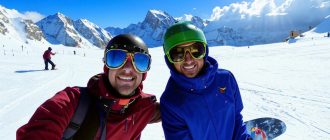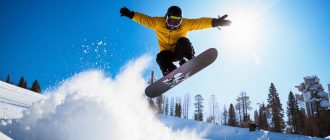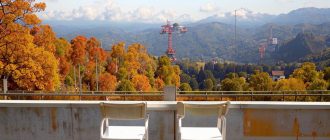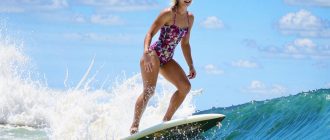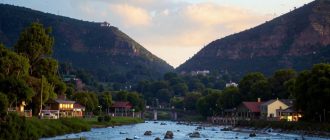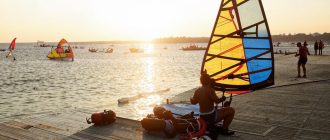This is the second part of the short course, compiled after my trip to the South of Russia within the Silk Way Rally-Raid – 2022. Let me remind you – this is only my opinion and my experience of the ride. The first part can be found here.
Remember that traveling is very interesting from the point of view of the fashionable concept of “expirience”. But don’t forget that almost everywhere you are a guest; that said, you shouldn’t just give yourself away. Southern regions are “merchant” regions: it is a normal thing here, even in relation to guests, to cheat, to haggle to the last drop of blood. So, having made a mistake, do not get upset, keep a fighting spirit – you are not the first, you are not the last.
So, all this text will be devoted to what and how to do, what to take with you, buy or not and what to be ready for in the glorious southern land.
We want to draw your attention to the fact that this text is for travelers who are going to drive into hard-to-reach places and organize an active rest with tents.
What is important to consider before traveling
First of all, comfort. As usual, when traveling, comfort will be at the level to which you can reduce it for yourself. Astrakhan and Volgograd are more or less financially stable regions, Chechnya and Dagestan have certain, sometimes complicated specifics, Kalmykia is a poor and sometimes wild republic. Yes, there are luxury hotels for businessmen, but why go to Elista to stay in a hotel? Then it is better to go in search of quality European vacation. So put your tents in your teeth and go ahead to conquer the horizon.
Secondly, weather conditions. Temperature difference can be cardinal: from +40 during the day to +10 at night. The difference in pressure too (meteorologists will have a hard time) – on one side are mountains, on the other steppes, on the third a river, and all this at different altitudes. It can be unpleasant when you are not used to it. It rains here in a mature way, without any light Moscow drizzle. At the bivouac in Kalmykia we had a main power line flooded (yes, the electricians there are not good, but it is a thick high-voltage wire in insulation and a panel mounted high from the ground. Within 30 minutes of the rain it was +35 as soon as the sun came out. An hour later all the stuff was dried.
Third, the coloring. Above I have already written a few words about ethics, below I will disclose wider. In all regions where we were, at least once we faced the situation “we don’t do that here”. Including driving through checkpoints – there are several of them: in Stavropol, at the entrance to Dagestan, and at the entrance to Chechnya. Maybe it was the appearance of yours truly or my excessively direct “diplomacy”, but communication did not always work out the first time.
And now about something else. About what to take with you.

Clothes
I will tell at once, having interrupted sportsmen: only natural materials for “lower layers”. Cotton, linen, wool – minimum synthetics. It’s better to get wet/sweat and dry/wash than to get irritation that will drive you crazy. Sure, if you have a habit of wearing synthetic clothing for intense exertion, you might be ok, but intense exertion that requires compression, cooling, or sweating won’t be enough to walk around in cool athletic synthetics all the time.
Be sure to bring a couple long sleeve clothes – the chance of you getting burned is pretty high. It’s not a bad idea to have at least one shirt, at least a plaid one, at least a militaristic one.
For pants: a pair of cargo pants (don’t take black ones, they will burn out into a nasty pink-orange anyway, and it will be hotter), regular shorts, swimming shorts (those with mesh).
Lifehack. Afghani pants. Hot – pulled up to the knees, cool – turned down. If you take light – freedom and coolness, if dense – keep the temperature inside. Only carefully choose fabrics, lycra will kill you.

On men’s underwear: personal experience says that “Puma”/”Nike”/”Adidas” boxers are a great choice.
On socks: I will give below recommendations for shoes, and based on them – take a set of short and high cotton socks. Take with reserve, the body sweats mercilessly, you risk repeating my mistake – at a certain moment, running away with a sweaty foot, wipe it in blood. Plus no one is immune to trench disease.
Footwear
And now to the most important thing. A set of shoes looks like this – something for constant use, something for relaxing, something for water. Below – by parts:
Permanent
Trekking boots or sneakers. My favorite for years now has been the Lowa Renegade. This year tried a new to me company, RAX and their trekking sneakers. I liked them a lot, but for some reason they are a bit hot, probably a problem with ventilation. These are shoes you’ll be spending a lot of time in – all work outside the car and most of it behind the wheel. Tough, expensive, reliable.
Do not buy replicas under any circumstances. It is clear that the price tags bite, but, for example, my “Renegades” faithfully and faithfully served me for five years in a fairly tough operation. Replicas can give a long life after the first intensive load.

Walk and relax
Super soft cheap sneakers, linen slippers with jute soles, slip-ons. Throw some next to you in the car – if your feet get cramped when driving, if the urban landscape where you don’t want to carry heavier shoes.
For water
There are only two options here, but both require habit – classic slates or coral shoes. And I’m in favor of the second one – the foot is protected from more sides after all. Entrances to the Volga are quite steep in some places, and in small rivulets there are a lot of stones, garbage and tina. To climb there with bare feet is to take a risk (remember that you are on an autonomous trip, right?).
Rain in the south is a specific story, it floods immediately and quickly. It always takes quite a long time to dry trekking shoes, which may not withstand it, and it’s easy to catch cold in squelchy sneakers with wet feet. Therefore, on concrete/asphalt surfaces coral shoes can help you out unexpectedly.
I don’t write about rubber boots, because I think they are already in every car with the current weather. And if you don’t have them – urgently buy and put them on: high boots, necessarily with a cuff, preferably with a reinforced sole and toe/heel.
Headgear
Obligatory. You can wear any kind, according to your taste. Panamas of all stripes and full caps go well. Remember, a mesh cap won’t do any good.
Bonus: buff. Generally indispensable thing, three thousand ways of use. The thrill of a cold water-soaked baffle on your head in the sun in Astrakhan is priceless.

How to wear a baffle
They sound like this (for non-Muslims): fully closed legs, fully closed shoes, skirts strictly in the floor, it is highly desirable to close tattoos (I did not do this, which was the cause of a small conflict). Visiting Islamic monuments (including the Heart of Chechnya) may become an unexpectedly unsolvable problem.
Accessories
- Inexpensive sports watch. I’ve been wearing my Suunto Core for a year now, and I can’t get enough of it. I had everything with them – they drowned, burned, fixed cars, once even almost got hit by a chainsaw at a logging site. They work like darlings, you only have time to change the straps.
- A knife, preferably two. Not hell’s cleavers, that’s not what we’re talking about at all! My set looked like this – old Fiskars K40 and Victorinox Climber. But I will recompose it, taking instead of “Fiskars” proven Mora Companion and adding my Leatherman Wave+ with a set of bits.
- Flashlights. Also two pieces – more or less powerful handheld and headlamp for work. As a handheld it makes sense to take “Bright Ray” rather than expensive “Phoenix”. “Rays” are quite reliable, and in case of loss or breakage will not be excruciatingly painful. But with headlamps, I’m incredibly enamored with Armytek Zippy. Especially from the belt clip and ball mount.
- Dark glasses. Took the ION Lucid for a spin, I’m incredibly happy with it. I have traumatized eyes (thanks to Norwegian snow) and recently discovered astigmatism, so I am quite reverent about eye protection. ION make goggles for extreme athletes, primarily surfers, but they did a great job with the rally raid as well.
- Gloves. A set of cotton gloves and normal strong leather gloves or Mechanix with protection. There can be a lot of bivouac works, you will have to fix the car, chop wood if necessary. But then why almost one of the strongest gloves in the world of expensive brand? I answer: in the previous article I told you a story about a boiling car. So, after replacing the radiator or pouring antifreeze, the system needs to be pumped, and the temperature of the tube in critical modes of operation of the engine can be very high. And a cotton glove will not save you from such temperature. A case at a race, though with a sports car. The navigator of the “kibitka” (so called class T1), actually, unscrewing the cap of the boiling radiator, got in the face and hands boiling antifreeze. Burned, out of the race, scarred for life.
- Phone with a powerbank. And at least two charging cables with you.
- Banana bag. Saw that many people go with large bags from Nike, but I prefer the recently discovered brand Rhombys (our guys from Krasnodar). Another great option discovered is LowePro bags, comfortable and large, after all, the brand specializes in bags and backpacks for photographers.
Equipment
- Tent. Obligatory with tent water resistance rating above 3000.
- Sleeping bag. I gave up summer sleeping bags a long time ago, as far as I’m concerned – there is no use for them. Even in hot weather I carry a blanket bag from Huntsman for -15/-20. If it’s hot – it acts as an additional softening, if it’s cold – as a covering main layer, plus because of the shape of the blanket you can perfectly cover yourself in the car, and the outer layer of oxford can be washed with ordinary water.
- Layout. No foam/mat/mattress pad can replace a cot. That’s it, no options. Pros – height from the ground will allow you to stay warm (soil, by the way, also freezes, and asphalt has a unique property to gain and lose temperature quickly), cons – space and size. When transporting, you need to take into account the size of the cot, the tent should also be matched to the bed.
Food and drinks
The Russian south is a region where everything is good with products. Agriculture is at a fairly high level, you can not be afraid of poisoning. Another thing to watch out for is to eat only fresh food. The heat makes itself felt, and quite quickly. Buy – eat, if we are talking about vegetables, fish and meat. Dairy products – similarly.
The most important thing that you should have plenty of in your car and with you is water. It is better to separate technical and drinking water at once. By experience – drinking water is best in small bottles 0,3 or 0,5. You will lose a lot of liquid, the minimum volume of water to drink should be about 2-2.5 liters per adult, depending on body weight. So we always have a large pack of water and two five-liter bottles with us.
Don’t forget to eat at least twice a day – if you only get water into your body, it will lead to digestive problems pretty quickly.

First aid kit
The classic traveler’s kit needs to be expanded after all. According to the classics – we go from the bottom to the top.
- Cooling ointments for bruises and sprains.
- Plasters: bactericidal and rolled.
- Bandages ordinary, sterile and elastic.
- Iodine and zelenka in pencils.
- Hydrogen peroxide and chlorhexidine.
- Non-prescription analgesics – I personally recommend Nimesil in powder.
- Over-the-counter antihistamines.
- Validol, citramone, analgin, baralgin, no-shpa (called “first aid kit from the 90’s” in the jargon).
- Splints on all limbs plus a collar.
- Nasal drops – Rhinofluimucil or Tizin.
- Eye drops.
That’s the minimum. Remember that it is actually most often not so much for you, but for the “fellow loser”.

Important point. Reiterate the regulatory framework for first aid.
Never get on the road just out of a sense of heroism – even if you are a professional rescuer or medic, now you are off duty, and equally as for leaving in danger there are penalties for negligence or non-medical error. The thesis from an airplane emergency fits well here – put the oxygen mask on yourself first, then the child. Same here – you first, then everyone else.
On this positive note my short course and story about the South ends. Next up is “The Pedestrian North, or How to Go to Murmansk for a Weekend”.

